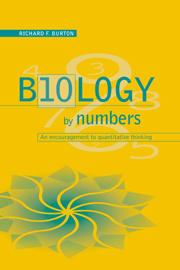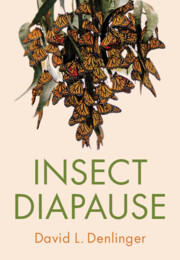Biology by Numbers
This textbook is both an introduction to quantitative biology and a guide for the number-shy. Richard Burton fosters a sense of the fundamental importance and usefulness of mathematical principles in biology, with a fascinating range of examples. The book is geared toward the nonmathematician, and covers the basics as well as various more advanced topics from many diverse biological disciplines. Questions and calculations encourage active participation without holding up the casual reader. A key feature is the structure of the book. Rather than building it around biological disciplines, Dr. Burton emphasizes the common ways of reasoning used in areas as diverse as insect and population growth, seed mortality, and sensory response (to mention a few that use logarithms).
- Written for the number-shy undergraduate, a common species of biologist, and assumes minimal maths ability
- Takes the approach of explaining why maths is a powerful tool in biology rather than just rote learning of exercises
- The author wrote the popular text Physiology by Numbers widely adopted for biology and medicine courses
Reviews & endorsements
"As a gentle introduction to mathematics for the numerically phobic biology undergraduate, Richard Burton's Biology by Numbers could hardly be bettered. Well-chosen examples take the agony out of algorithms and the confusion out of calculus." New Scientist
"...Burton's book is a cornucopia of such succulent biological fruits as the snail albumin gland, grazers on grasslands, sodium in the diets of moose, and the allometries of stag beetles. Taken in a single serving, it makes for a very rich diet. The book is designed to attract two types of readers: the mathematically inclined who seek an introduction to biological problems, and the mathematically timid who sense a need to use quantitative methods to make sense of biology." Fred Adler, Bulletin of Mathematical Biology
Product details
February 1998Hardback
9780521571562
256 pages
235 × 157 × 21 mm
0.522kg
64 b/w illus. 12 tables
Available
Table of Contents
- Preface
- A guide to the book
- 1. Putting two and two together
- 2. Units, formulae and the use of old envelopes: confronting some obstacles to quantitative thinking
- 3. Aspects of energy metabolism
- 4. Getting things in proportion
- 5. Perilous percentages, dangerous ratios
- 6. Building a trophic pyramid
- 7. Sodium in animals and plants
- 8. Exchanges of water and carbon dioxide
- 9. A geometric series
- 10. Introduction to logarithms
- 11. Bringing logarithms to life
- 12. Exponential relationships
- 13. Aspects of allometry
- 14. More on allometry, and on quantitative patterns in nature
- 15. How the abundance of food affects rates of feeding
- 16. The characterization of trees and other branching systems
- 17. Epilogue
- References
- Notes
- Index.








